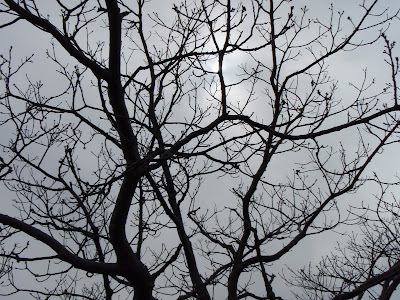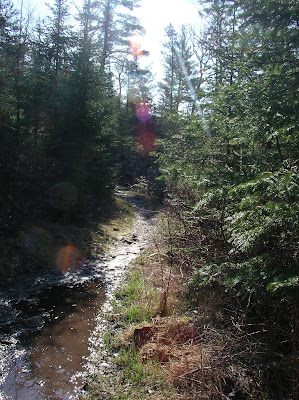
What a tumultous month it's been! With Democratic presidential candidate Barack Obama elected in a landslide, most of the nation's people are feeling optimistic in spite of a global financial downturn with no end in sight. The nation has been under such an oppression for the last 7 years that lifting and drop kicking out the Republicans at the polls has given the populace a bit of self-determined optimism that "we shall overcome" and take back so much that has been robbed from us by the Bush/Cheney cabal.
We're finally getting some promised snow, with the last few days of below freezing temperatures preparing us for what was predicted since last week. I'm hoping to get out on my skis this week as the Nordic Track treadmill is getting tiresome. I must say that I am concerned about the status of my fitness to guide the trips over at Wintergreen with my hips and lower back being consistently sore.
I am possibly going to be doing some kayak guiding trips with Living Adventure out of Bayfield this next summer. I'm email corresponding with Gail Green after Ervin M. put in a word to her that I was interested in getting back working in the Apostles. Hopefully this will lead somewhere good in the future.
I am very haltingly going forward at writing an informational article on dog team trips at Wintergreen for Northern Wilds which is a North Shore of Minnesota newspaper that Kate works for. Once I talk to Sean Perrich, the owner and editor of Northern Wilds things will hopefully fall into place for my writing...
(Evening) The snow continues to sift down and I'm glad that we have ample seasoned wood for this winter. I finally bought some stove oil for our furnace - 80 gallons to top off our tank. The stock market crash world wide has lowered petroleum prices by nearly 2/3, even with OPEC cutting production. Now was a good time to stock up, though prices of fuel oil haven't dropped as much as gas. This summer we paid for a time in excess of $4.00 a gallon for gasoline and it is now around $2.00 a gallon.
Got my first view of a Northern Shrike swooping in on the birds at our feeders today. After last winter not having goldfinches and purple finches staying around it is nice to see a large flock of them (goldfinches) at our feeders.
We're finally getting some promised snow, with the last few days of below freezing temperatures preparing us for what was predicted since last week. I'm hoping to get out on my skis this week as the Nordic Track treadmill is getting tiresome. I must say that I am concerned about the status of my fitness to guide the trips over at Wintergreen with my hips and lower back being consistently sore.
I am possibly going to be doing some kayak guiding trips with Living Adventure out of Bayfield this next summer. I'm email corresponding with Gail Green after Ervin M. put in a word to her that I was interested in getting back working in the Apostles. Hopefully this will lead somewhere good in the future.
I am very haltingly going forward at writing an informational article on dog team trips at Wintergreen for Northern Wilds which is a North Shore of Minnesota newspaper that Kate works for. Once I talk to Sean Perrich, the owner and editor of Northern Wilds things will hopefully fall into place for my writing...
(Evening) The snow continues to sift down and I'm glad that we have ample seasoned wood for this winter. I finally bought some stove oil for our furnace - 80 gallons to top off our tank. The stock market crash world wide has lowered petroleum prices by nearly 2/3, even with OPEC cutting production. Now was a good time to stock up, though prices of fuel oil haven't dropped as much as gas. This summer we paid for a time in excess of $4.00 a gallon for gasoline and it is now around $2.00 a gallon.
Got my first view of a Northern Shrike swooping in on the birds at our feeders today. After last winter not having goldfinches and purple finches staying around it is nice to see a large flock of them (goldfinches) at our feeders.






































